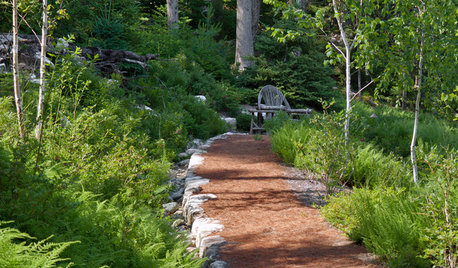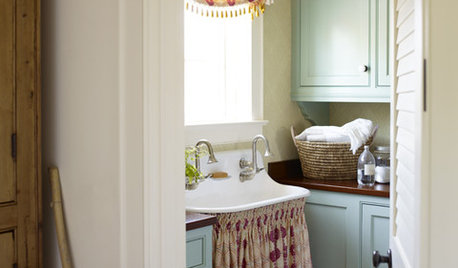when to cover / mulch?
Snomam
17 years ago
Related Stories

GARDENING GUIDESThe Art of Green Mulch
You can design a natural garden that doesn’t rely on covering your soil with wood and bark mulch
Full Story
GARDENING GUIDESNew Ways to Think About All That Mulch in the Garden
Before you go making a mountain out of a mulch hill, learn the facts about what your plants and soil really want
Full Story
GARDENING GUIDESHow to Pick a Mulch — and Why Your Soil Wants It
There's more to topdressing than shredded wood. Learn about mulch types, costs and design considerations here
Full Story
GARDENING AND LANDSCAPINGWhat You Need to Know When Considering a Cabana or Covered Patio
Learn how to plan for a covered outdoor structure, what features are available to you, how much it will cost and more
Full Story
GROUND COVERSGround Force: 10 Top Ground Covers for Your Garden
Protect your soil from weeds and drought this summer with a living mulch of ground covers
Full Story
GARDENING GUIDESGot Frost-Damaged Plants? How It Happens, and When and How to Prune
Crispy brown leaves are a sure sign that Jack Frost has been to your neighborhood
Full Story
GARDENING GUIDESWhen and How to Plant a Tree, and Why You Should
Trees add beauty while benefiting the environment. Learn the right way to plant one
Full Story
GARDENING GUIDES5 Things to Know About Weeding and Mulching Your Native Garden
What’s the best time to pull weeds? How thick should the mulch be? Here’s the scoop for a healthy landscape
Full Story
CONTRACTOR TIPSBuilding Permits: When a Permit Is Required and When It's Not
In this article, the first in a series exploring permit processes and requirements, learn why and when you might need one
Full Story
BATHROOM SINKSVintage Style: When, Why and How to Use a Sink Skirt
There’s no skirting the issue: There are times when this retro look is just right
Full Story





heartsease
justaguy2
Related Professionals
Surprise Landscape Architects & Landscape Designers · Garden City Landscape Architects & Landscape Designers · Graham Landscape Architects & Landscape Designers · Havre de Grace Landscape Architects & Landscape Designers · Prairie Ridge Landscape Architects & Landscape Designers · Matthews Landscape Contractors · Caldwell Landscape Contractors · Coram Landscape Contractors · Fort Wayne Landscape Contractors · Waipahu Landscape Contractors · Wallingford Landscape Contractors · Hayward Carpenters · Plainfield Carpenters · Roselle Carpenters · San Mateo Carpentersupnortdareh
daddylonglegs
SnomamOriginal Author
leftwood
tsugajunkie z5 SE WI ♱
Bob_Zn5
greenjoy_4a
SnomamOriginal Author